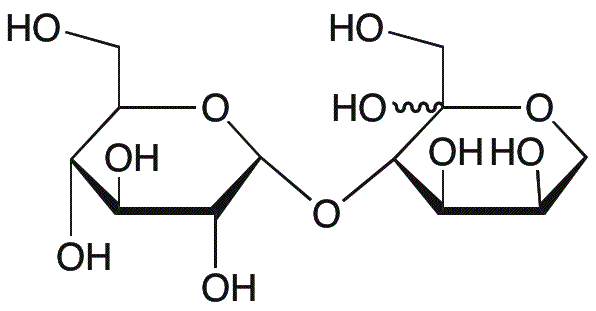D-(+)-Turanose is widely utilized in research focused on:
- Food Industry: Used as a natural sweetener, it offers a lower caloric alternative to traditional sugars, making it appealing for health-conscious consumers.
- Pharmaceuticals: Acts as a stabilizing agent in drug formulations, enhancing the shelf life and effectiveness of medications.
- Biotechnology: Serves as a carbon source in microbial fermentation processes, aiding in the production of biofuels and bioproducts.
- Cosmetics: Incorporated in skincare products for its moisturizing properties, providing a gentle alternative for sensitive skin.
- Research Applications: Used in studies related to carbohydrate metabolism, helping researchers understand its role in various biological processes.
General Information
Properties
Safety and Regulations
Applications
D-(+)-Turanose is widely utilized in research focused on:
- Food Industry: Used as a natural sweetener, it offers a lower caloric alternative to traditional sugars, making it appealing for health-conscious consumers.
- Pharmaceuticals: Acts as a stabilizing agent in drug formulations, enhancing the shelf life and effectiveness of medications.
- Biotechnology: Serves as a carbon source in microbial fermentation processes, aiding in the production of biofuels and bioproducts.
- Cosmetics: Incorporated in skincare products for its moisturizing properties, providing a gentle alternative for sensitive skin.
- Research Applications: Used in studies related to carbohydrate metabolism, helping researchers understand its role in various biological processes.
Documents
Safety Data Sheets (SDS)
The SDS provides comprehensive safety information on handling, storage, and disposal of the product.
Product Specification (PS)
The PS provides a comprehensive breakdown of the product’s properties, including chemical composition, physical state, purity, and storage requirements. It also details acceptable quality ranges and the product's intended applications.
Certificates of Analysis (COA)
Search for Certificates of Analysis (COA) by entering the products Lot Number. Lot and Batch Numbers can be found on a product’s label following the words ‘Lot’ or ‘Batch’.
Numéro de catalogue
Numéro de lot/série
Certificates Of Origin (COO)
This COO confirms the country where the product was manufactured, and also details the materials and components used in it and whether it is derived from natural, synthetic, or other specific sources. This certificate may be required for customs, trade, and regulatory compliance.
Numéro de catalogue
Numéro de lot/série
Safety Data Sheets (SDS)
The SDS provides comprehensive safety information on handling, storage, and disposal of the product.
DownloadProduct Specification (PS)
The PS provides a comprehensive breakdown of the product’s properties, including chemical composition, physical state, purity, and storage requirements. It also details acceptable quality ranges and the product's intended applications.
DownloadCertificates of Analysis (COA)
Search for Certificates of Analysis (COA) by entering the products Lot Number. Lot and Batch Numbers can be found on a product’s label following the words ‘Lot’ or ‘Batch’.
Numéro de catalogue
Numéro de lot/série
Certificates Of Origin (COO)
This COO confirms the country where the product was manufactured, and also details the materials and components used in it and whether it is derived from natural, synthetic, or other specific sources. This certificate may be required for customs, trade, and regulatory compliance.


